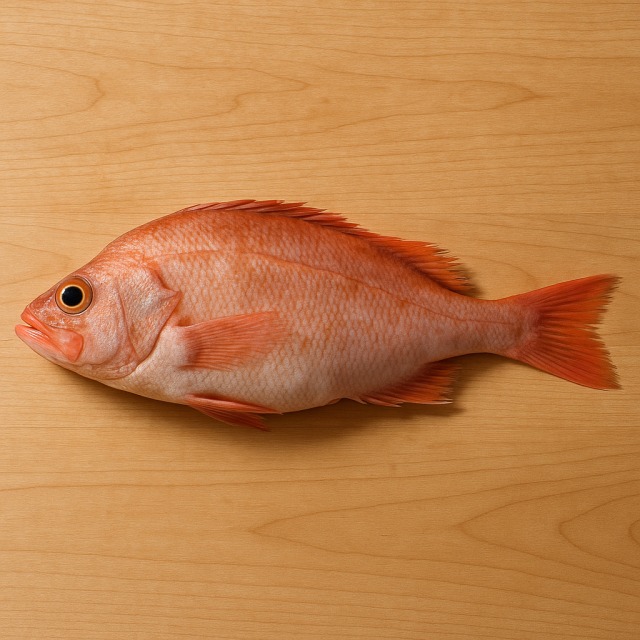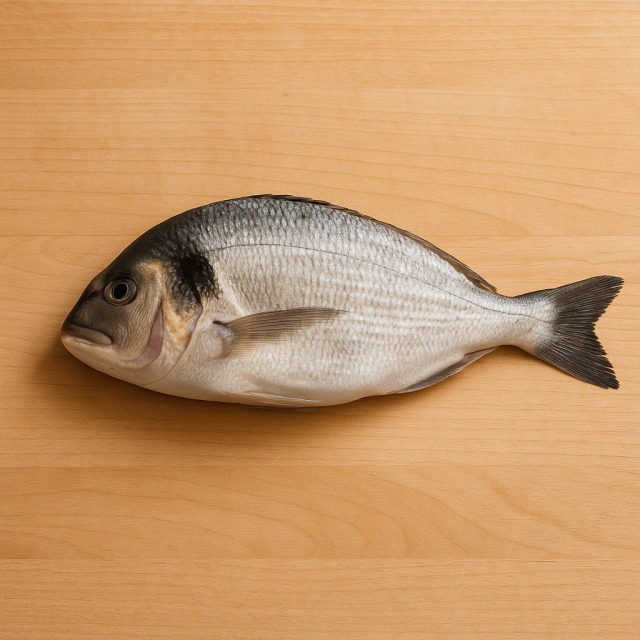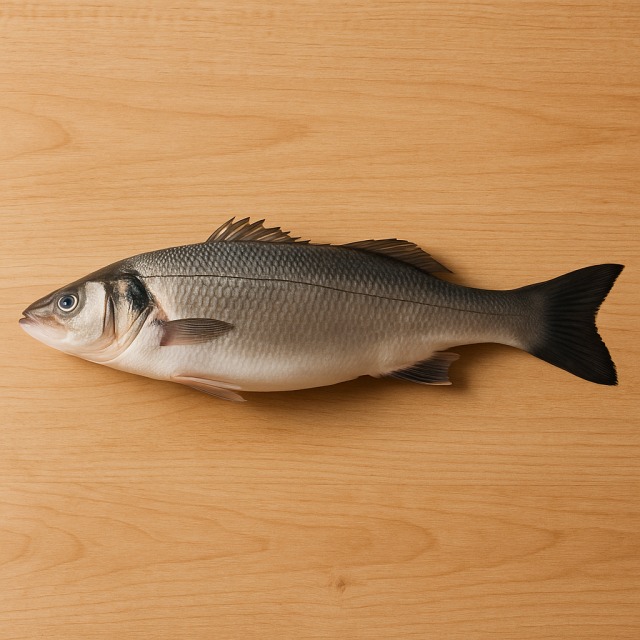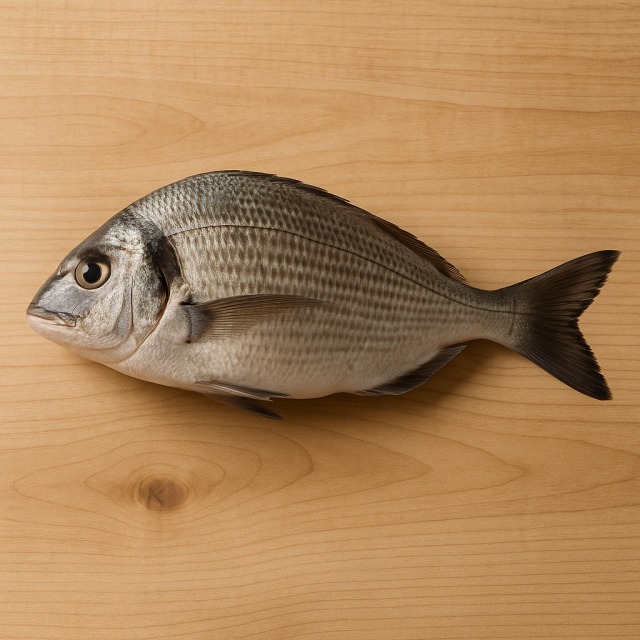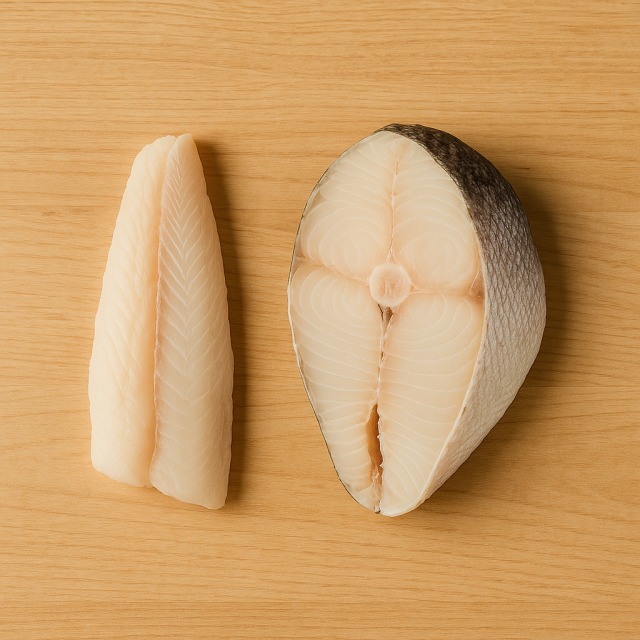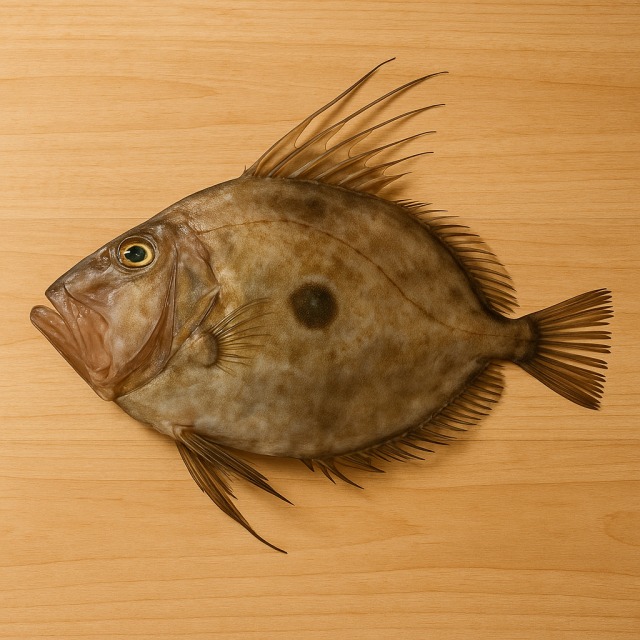Calorie Chart / Fish / Pollock
How Many Calories Are in Pollock?
Calculation of the nutritional value & Recommended Dietary Intake of pollock
For g and a calorie requirement of kcal
| Calories 135 kcal | Proteins 27 g | Lipids 3 g | Carbohydrates 0 g |
| 7% | 36% | 4% | 0% |
Health benefits of pollock
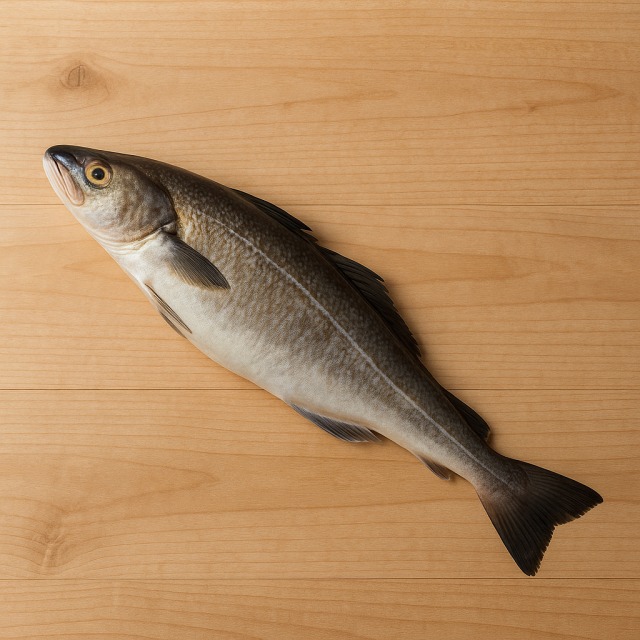
Pollock - 100g
Calories 90 kcal
Proteins 18 g
Lipids 2 g
Carbohydrates 0 g
Pollock is considered a low-calorie fish, making it a smart choice when you want flavour without loading up on calories. Despite its modest calorie content, it supplies around 18 g of high-quality proteins per 100 g, helping with muscle maintenance and satiety while keeping calories in check. Pollock also provides vitamin B12, essential for red-blood-cell formation and nervous-system health, together with selenium and phosphorus that support antioxidant defences and bone integrity.
The iodine naturally present in pollock contributes to normal thyroid function, which in turn regulates how your body burns calories. The fish delivers small but useful amounts of marine omega-3 fatty acids (EPA and DHA); although poorer in fat and therefore in calories than oily species such as salmon or mackerel, these unsaturated fats still play a role in cardiovascular well-being. Because of its lean profile, pollock is often classified as a low-calorie protein source, ideal for diets that need tight calorie management.
Environmentally, Alaska pollock is frequently cited as a sustainably managed stock, adding an ethical benefit. Historically, it became popular in Europe after World War II as an affordable alternative to higher-calorie cod, and today it is still appreciated for delivering taste, nutrients and minimal calories.
Tips for incorporating pollock into a balanced diet
When you design a balanced, calorie-controlled menu, combine steamed pollock with a side of broccoli drizzled with lemon juice: the vitamin C helps iron absorption while keeping calories very low. For a heartier yet still moderate-calorie plate, bake pollock "en papillote" with diced tomato, bell pepper and fresh herbs; serve it over fluffy quinoa to add complex carbohydrates without excessive calories.
If you crave comfort food, swap fried fish sticks for homemade pollock tacos: grill the fillets, place them in corn tortillas, top with shredded red cabbage and a spoon of light yogurt sauce. This keeps the dish satisfying while respecting your daily calorie cap. Pollock also folds nicely into a Mediterranean fish soup alongside crab or shrimp; the broth adds flavour, not calories.
Because pollock is virtually carbohydrate-free and low in fat, athletes who need extra energy can round out the meal with a portion of brown rice or a slice of wholemeal bread. Conversely, people aiming to cut calories can pair the fish with steamed spinach or a crisp cucumber salad, preserving satiety without adding unwanted calories.
Frequently Asked Questions
- How many calories are in pollock?
- Pollock provides 90 kcal per 100 g.
- Is pollock good for a low-calorie diet?
- Yes. With only 90 kcal per 100 g and virtually no carbohydrates, pollock fits easily into low-calorie meal plans.
- Does pollock contain omega-3 despite its low calories?
- Although lean, pollock still offers about 0.4 g of omega-3 per 100 g, giving heart benefits without boosting calories significantly.
- How does pollock compare with salmon in terms of calories?
- Salmon averages around 200 kcal per 100 g, more than double the calories of pollock, because it is richer in healthy fats.
- Can I eat pollock if I watch my protein-to-calorie ratio?
- Absolutely. Pollock delivers 18 g of protein for just 90 kcal, giving an excellent protein-to-calorie ratio.
- Is frozen pollock higher in calories than fresh?
- No. Whether fresh or properly frozen, pollock retains the same 90 kcal per 100 g; added breading or sauces would raise calories.
Similar foods
Information provided by Calorie Menu may contain inaccuracies or errors. It cannot, under any circumstances, substitute medical advice or medication.
